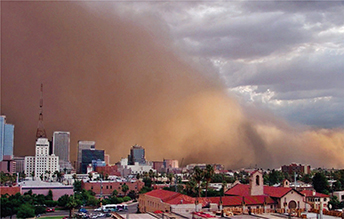Figure 24 This large dust storm blew through downtown Phoenix, Arizona, in 1999.

Effects of Wind Deposition
When wind slows down, it drops the sediment it is carrying.  Features deposited by wind include sand dunes and loess deposits. Deposits formed from windblown sand are called dunes. Over time, sand dunes can move great distances. A dune moves as the wind picks up sand from the back of the dune and blows it to the front. Sand dunes can take many different forms, depending on wind direction and how much sand is available.
Features deposited by wind include sand dunes and loess deposits. Deposits formed from windblown sand are called dunes. Over time, sand dunes can move great distances. A dune moves as the wind picks up sand from the back of the dune and blows it to the front. Sand dunes can take many different forms, depending on wind direction and how much sand is available.
Deposits formed from windblown dust are called loess (LES). Loess consists mainly of finely ground particles. The two major sources of loess are deserts and glacial deposits. A dust storm like the one in Figure 24 can transport tons of dust for long distances. Dust from the Sahara Desert in Africa regularly blows across the Atlantic Ocean.
Section 23.4 Assessment
Reviewing Concepts
 What conditions are necessary for a glacier to form?
What conditions are necessary for a glacier to form? Identify three features caused by glacial erosion.
Identify three features caused by glacial erosion. Describe three features caused by glacial deposition.
Describe three features caused by glacial deposition. What are the two ways that wind erodes particles of rock?
What are the two ways that wind erodes particles of rock? What features can form as wind deposits sediment?
What features can form as wind deposits sediment?What is plucking?
How does deflation affect the land surface in dry regions?
How do sand dunes form and move?
Critical Thinking
Relating Cause and Effect How are both glaciers and wind involved in the formation of loess deposits?
Comparing and Contrasting How is the way wind carries sediment similar to the way a stream carries sediment? How are these processes different? Explain.
Writing in Science
Compare and Contrast Paragraph Write a paragraph comparing how V-shaped valleys and U-shaped valleys are formed. Include an explanation of how a V-shaped valley could turn into a U-shaped valley.




